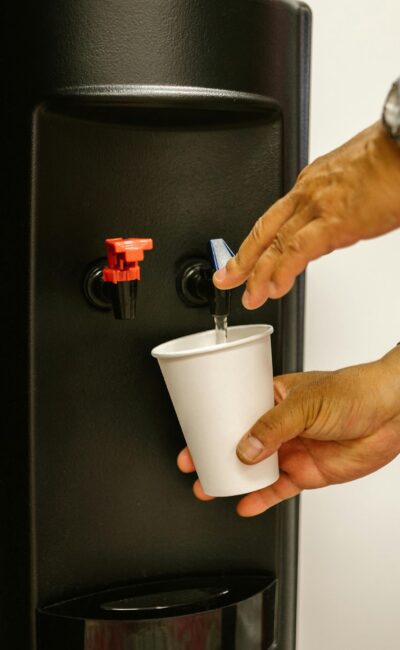In March 2020, the U.S. Congress passed the CARES Act in response to the novel coronavirus through the GEER Fund or Governors Emergency Education Relief Fund. This financial aid package was provided to all of the states for funding schools and offering flexibility during the pandemic.1 Now, more than a year after the global pandemic brought in-person education to a halt, the world is slowly starting to reopen again.
In the U.S., schools are largely back in session, slowly moving from the remote learning or distance learning implemented in 2020, to in-person sessions. However, before deciding to reopen, schools must take into account several areas of health and safety for everyone on the campus. As part of guidelines for reopening schools the use of masks, sanitizers, and new cleaning protocols must be considered.
But for the many institutions that have had limited, if any, students and teachers using their buildings for the past several months and made the transition to online learning, testing the infrastructure is important before resuming campus operations. This includes ensuring the water quality is up to good health standards.
Before school administrators give the green light for teachers and students to return to classrooms, it’s important to understand the current status of CARES Act funding. This includes how this federal student aid is allocated, updates to financial relief, and how to prepare facilities for the return back to full-time and in-person classes.
How CARES Act School Funding Is Allocated
When the CARES Act school funding was introduced in March 2020, it allocated $270 of CARES Act money per pupil. As of April 2021, the U.S. The Education Department has provided new rules and guidelines for how states and school districts should plan for spending money for their schools as part of the new federal relief supplemental package, the American Rescue Plan.1
The American Rescue Plan delivers $2,600 per pupil, a significant increase from the initial financial boost the year before. Each state must develop and submit plans for how they’re spending their share of the $121 billion budget reserved specifically for a K-12 public school. Part of the regulations for American Rescue Plan spending includes:
- State agencies must spend at least five percent on learning loss, one percent on summer learning, and one percent on afterschool programs
- $40 billion of the total grant is allocated to higher education institutions, much going directly into grants for public and nonprofit colleges and universities, as well as vocational schools.
- $1 billion is allocated to expand national service programs to support response and recovery, such as tutoring programs in schools.
- $7.2 billion is allocated for the E-rate program that makes it easier to connect homes and libraries on the internet.
The bulk of CARES funding for schools is rightfully allocated to support education in an equitable way for all students. Although, alongside this emphasis on students’ educational and mental health and well-being is also a need for resources to provide safe buildings and water supplies.
Coronavirus Response and Relief Supplemental Appropriations Act (CRRSA Act) for School Facilities
The CARES Act and American Rescue Plan are both Covid relief packages for school funding. However, the Biden Administration also proposed more than $100 billion for school facility repairs and construction as part of its infrastructure plan. This includes plans to expand facilities, improve high-speed broadband infrastructure, and replace all lead pipes.
These upgrades would be funded through $50 billion in grants, with another $50 billion leveraged through bonds. The use of the fund through the CRRSA has a wide range of uses, all of which must directly aim to stabilize school facilities. Specific provisions for the school’s infrastructure include but aren’t limited to:
- Repairing school facilities, especially ventilation systems, to improve air quality and reduce the spread of Covid
- Purchasing PPE and supplies needed to clean and disinfect schools
- Training staff on the best ways to sanitize schools and implementing the proper use of PPE
As districts are planning out their spending, the Education Department proposes they evaluate their spending against the following five questions:
- Will the proposed use of HEERF funds “prevent, prepare for, and respond to coronavirus?”
- Is it an allowable use of CARES funding for schools?
- Is it reasonable and necessary?
- Does it promote equity?
- Does it support returning students to the classroom?
Put simply, the various federal funding packages initiated by the federal government are intended to help schools get the resources they need to open up their schools safely with student health as top priority.
Why Facility Updates Are Important to Student Health
In addition to the equipment and resources required to maintain successful learning for students, there are also updates to the facilities that must be met, particularly after such a long shutdown. The Centers for Disease Control and Prevention warns the shutdown has led to reduced operation of buildings, which creates abnormal water usage. Water that has remained stagnant for weeks, even days, is hazardous for the health of those returning to the classroom.2
Prior to reopening schools, administrators must check for possible hazards that may have occurred due to standing water and old pipes. These hazards include mold, lead, and copper contaminations, and the presence of Legionella.
Mold quickly grows on any materials where there’s moisture caused by leaks or condensation from poorly ventilated HVAC units. It can grow on a variety of surfaces, including wallpaper, carpet, and ceiling tiles. As a result, this could cause serious health problems, especially for those who suffer from asthma and other respiratory conditions.
Additionally, the presence of copper or lead can leach into water from old, outdated pipes and contaminate drinking water dispensed from water fountains and faucets. The health effects of lead in drinking water can be severe. Similarly, the presence of Legionella and other bacteria may be a concern due to how long water has been stagnant inside the pipes. Consumption of any of these types of contaminants could lead to several adverse health effects, specifically in younger children.
How to Use CARES Act School Funding to Update Facilities
Ensuring water testing is implemented and facilities are inspected, cleaned, and disinfected are all ways schools can put their funding to good use. When there is the presence of mold, steps to take are:
- Keeping indoor humidity low
- Checking for areas of mold or excess moisture
- Turning on the HVAC system for at least 48 to 72 hours prior to opening schools to determine the need for new filters, presence of mold, and help indoor regulate temperatures
- Regular HVAC checks and filter replacement, as needed
To minimize the risk of Legionella in school water pipes, it’s necessary to:
- Flush water systems with hot and cold water at all water entry points
- Minimize splashing or aerosol generation during flushing to prevent exposure
- Check other water-using devices, such as ice machines, and follow the same flushing steps
- Clean all water features, such as water fountains and sinks
- Ensure maintenance of cooling towers and fire safety equipment, such as sprinkler systems and eyewash systems
- Check with city water boards to learn about any recent disruptions to the school water supply
Finally, the CARES Act funds for schools can be applied for the replacement of lead and copper building pipes. When there are long periods with no water use, corrosion often occurs. This causes toxic chemicals to mix into drinking water, making it unsafe for human consumption. A few additional ways schools can invest in fixing these problems include:
- Clean faucet screens regularly to remove any debris, sediments, and particles that may collect in the aerator
- Use filtration measures properly to remove lead, copper, and other chemicals
- Learn about the quality of water coming into the building through the consumer confidence report
Investing in Clean Drinking Water Stations in Schools
Performing adequate testing and updating old pipe systems and water fountains can all take time and resources that may not be available in time for schools to reopen. In the meantime, it’s crucial for those returning to schools to have access to clean drinking water. By using allocated federal funding for water bottle water fountains for schools, it improves the infrastructure of the building, as well as provides health benefits for students and teachers.
The FloWater Refill Station is a solution that works with water systems already in place. By transforming tap water, it uses the resources available and creates water that is clean, refreshing, and ready to support a large number of people at one time. The FloWater Refill Station is designed to serve a high capacity of people with purified water available on-demand at all times. This results in limited lines and less waiting for those who want to fill up between classes.
It also distributes water at the optimal drinking temperature of 42 degrees and can fit any size of water container. Plus, the slim setup is environmentally friendly, with little to no maintenance required to keep it clean and ready for use. It easily fits into a school hallway, break room, gymnasium, and other main areas for students and faculty to use.
FloWater uses a seven-stage advanced purification system that ensures the water dispensed to students is the cleanest, best-tasting water available. The transformation begins with three filters that remove particles, starting from largest to smallest.
- The sediment filter captures dirt, dust, rust, and other larger elements that pass through water pipes.
- The carbon filter captures smaller contaminants, such as chemicals, lead, copper, viruses, and bacteria.
- The advanced osmosis filter uses a semipermeable membrane to capture the tiniest particles left, including bacteria, lead, viruses, and heavy metals.
Once the purification process is complete, the water is then passed through another set of filters that enhance the water quality. The activated oxygen filter adds small amounts of O3 to the water, which sanitizes the tanks and system and provides the amount of oxygen available in the water people drink.
Finally, the last three filters balance out the pH level of the water to neutralize acidity, add valuable electrolytes back to the water, and a coconut carbon finish to make sure the end product tastes great.
With the allocation of funds to update school facilities, it gives administrators a chance to make changes for the sake of the students. Additionally, there are ways to raise additional funds, such as a water bottle fundraiser. In many ways, schools are returning back to normal, but with a few necessary updates to keep everyone hydrated and in good health.
Sources:
- “Federal Stimulus Funding.” California Department of Education. https://www.cde.ca.gov/fg/cr/
- “What Congressional Covid Funding Means for K-12 Schools.” FutureEd. https://www.future-ed.org/what-congressional-covid-funding-means-for-k-12-schools/
- “Guidance for Reopening Buildings After Prolonged Shutdown or Reduced Operation.” Centers for Disease Control and Prevention. https://www.cdc.gov/coronavirus/2019-ncov/php/building-water-system.html





